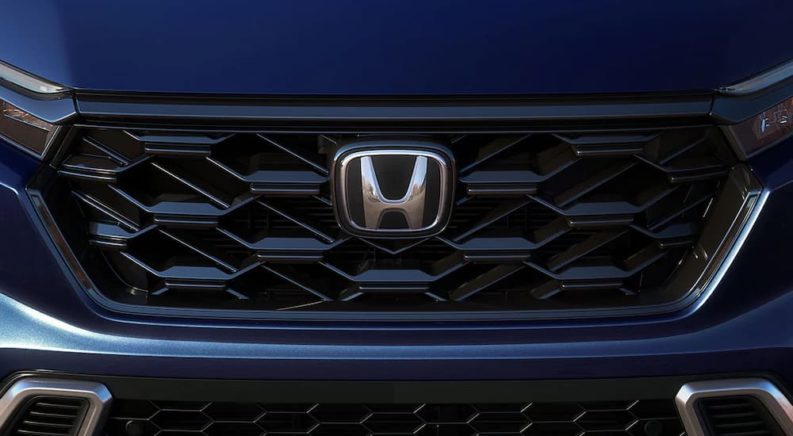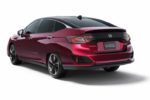In a world where nearly every pop culture franchise seems to get rebooted time and time again, the auto industry is lagging behind. From Star Wars and Jurassic Park to live-action Disney remakes and TV sitcoms, nostalgia is all the rage, and the same can be said when it comes to our cars, trucks, and SUVs. Automakers are often quick to move on to the next big thing, discontinuing or rebranding older models in an effort to drive sales and keep up with the competition. However, this trend seems to have slowed in recent years with the reintroduction of some familiar nameplates.
One such example is the 2023 Acura Integra, which is based on the new eleventh-generation Honda Civic that can be found at your local Honda dealership. Originally discontinued in 2006, the Integra makes its return as a five-door liftback, giving drivers an exciting new option that harkens back to an old favorite from Honda’s luxury division. The Integra’s rebirth provides the perfect excuse to look back at some of our favorite Honda models from years gone by. While these vehicles might no longer be in production, there’s no telling what the future might hold. The 2023 Integra was only a rumor until Honda’s official announcement in 2022, and that same rumor mill seems firmly convinced that the sporty Honda Prelude will be next.
Honda Prelude (1978 to 2001)
First introduced in 1978, the Prelude was a sporty compact coupe that served Honda well over its 20-plus years on the market. Part of a themed naming scheme that included Honda models like the Concerto, Jazz, and Ballade, the Prelude was music to the ears of any driver seeking a cutting-edge sports coupe that emphasized handling and the latest in performance technology. Competing with the likes of the Toyota Celica and Mitsubishi Eclipse, the Prelude became Honda’s most advanced automotive experiment before the high-performance NSX. It didn’t start out that way though. The first-generation Prelude is essentially an Accord stuffed into a smaller chassis, packing just 80 hp and a zero-to-60 time of around 13 seconds.
Those numbers might have made the Prelude a forgotten chapter in Honda’s history, but the automaker refined the design as the years went on, transforming the Prelude into a high-tech coupe with superior handling as it moved into its second generation. A new design allowed Honda to tweak the model’s suspension, adding the Prelude’s trademark double-wishbone front suspension that went a long way in improving a driver’s control behind the wheel. The engine also saw a notable upgrade, with a 2.0-liter DOHC four-cylinder allowing the second-gen Prelude to shave seconds off its zero-to-60 time.
The third-gen took things even further with the 1988 model offering first-of-its-kind four-wheel mechanical steering. Unlike the four-wheel steering offerings from Mitsubishi and Mazda, which relied on electronic components to direct the rear wheels, the Prelude’s system is entirely mechanical, improving reliability while driving down the overall cost. The fourth generation of the Prelude provided the perfect platform to showcase Honda’s new VTEC engine, which won over drivers and critics alike thanks to its innovative variable valve timing technology. The four-cylinder VTEC engine produces a whopping 187 hp and 153 lb-ft of torque: enough to power the coupe up to 60 mph in as little as seven seconds. The Prelude began its final generation in 1997 with the Type SH––”Super Handling”––version turning heads with its all-wheel drive system.
Honda produced five generations of the Prelude compact before phasing it out in 2001 as models like the Accord and Civic began to eat into its market share. Those who missed out on the Prelude’s heyday might well get their chance to experience life behind the wheel of the famous coupe as rumors continue to swirl around its reintroduction. While there’s no concrete evidence yet, there’s reason to believe Honda would welcome a rival for Japanese sports coupes like the Toyota GR 86 and Nissan Z. Plus, the high-tech Prelude would be the perfect name for Honda’s move to electric cars.
Honda S2000 (1999 to 2009)
While Honda has carved out a reputation for reliability and efficiency, the automaker also knows a thing or two about performance. That’s not surprising from a brand that happens to be the world’s largest manufacturer of internal combustion engines at over 14 million units per year, but it’s a fact that is too often lost in the shuffle. With its open top, sporty curves, and record-breaking naturally aspirated engine, the S2000 left little doubt about its high-performance credentials. Conceived as a rival to the Porsche Boxster and BMW Z3, this sports car has become a modern classic since being discontinued in 2009.
What makes the S2000 so special? It all starts with the 2.0-liter inline four-cylinder DOHC VTEC engine. At 124 hp per liter, it was the most energy-dense of any mass-produced naturally aspirated engine until the Ferrari 458 Italia arrived in 2009. That sort of power provided an excellent foundation for Honda to build the sports car of its dreams, which started in 1995 with a concept version that was blandly––if accurately––dubbed the Honda Sport Study Model concept car. Honda’s engineers knew two things at the outset of the project: they wanted to design a rear-wheel-drive roadster powered by a 2.0-liter inline four-cylinder engine, and they wanted to do it with as little interference from management and marketing as possible.
The first-generation S2000 AP1 was introduced in 1999 with a double wishbone suspension, X-frame chassis, and 50/50 weight distribution, giving the vehicle the hardware to match its powerful 247-hp engine and sporty appearance. For those who need a little context, the 9,000 RPM redline that gave the S2000 its abnormally high horsepower is something not commonly found outside of racing paddocks. This impressive engine and an equally race-ready digital instrument cluster made the S2000 a true standout in its class.
For the updated S2000 AP2, Honda reduced the sports car’s oversteer by retuning the suspension and altering the spring rates and dampers to improve stability and cornering. Models bound for the North American market also got a new, larger 2.2-liter engine that increased torque at the cost of a slightly lower redline. This, combined with shorter gear ratios on the first five gears, gave the AP2 improved acceleration over its predecessor, which is always a recipe for fun. Any mention of the updated S2000 wouldn’t be complete without touching on the CR variant. First offered in 2008, the track-oriented S2000 CR is lighter, faster, and more Spartan than the base model AP2.
The engine remained unchanged, but the CR model is almost 100 lbs lighter thanks to the absence of a spare tire, AC unit, and stereo. These changes, combined with a lower-ratio steering rack, new exhaust, redesigned aerodynamics, and a large spoiler, make the CR an agile and powerful little beast that quickly won over those seeking a higher-octane alternative to the base S2000. Carbon fiber overlays on the center console give the model’s interior a sporty feel, while a peak power indicator light brought a novel bit of race-inspired fun into the equation.
There might not be any plans in the works to bring the S2000 back to the masses, but if Honda should ever want to refill its trophy case, we know which model we’d choose to revive. The S2000 was well-decorated in its time, earning countless plaudits, including U.S. News & World Report’s Best Affordable Sports Car (2008 and 2009), Jalopnik’s 10 Best Cars of the Decade, Road & Track’s Best All-Around Sports Car, and Car & Driver’s 10 Best List (2000 through 2004).
Honda Element (2003 to 2011)
Listen, we know this is a polarizing choice, but love it or hate it, the Honda Element certainly brought something new to the table. The iconic SUV was the first in a new generation of boxy compact SUVs that emphasized functionality over their widely panned form, blazing the way for models like the Scion xB, Nissan Cube, and Kia Soul. While the Element only lasted one generation and was discontinued in 2011, it left an indelible mark on the industry with its bold design and youth-oriented concept.
Unlike many Honda models, the Element was a wholly American endeavor designed by engineers in the US to appeal to younger drivers seeking a reliable SUV that was perfect for hauling sports gear, pets, and friends. One of the SUV’s biggest selling points was its ability to double as roadside sleeping quarters. The Element’s front and rear seats folded completely flat, making for a comfortable sleeping option (for those who were as yet unfamiliar with the concept of back pain), with Honda’s chief product manager calling the SUV a “dorm room on wheels.”
The Element was based on the Model X concept (no relation to the Tesla) that debuted at the 2001 North American International Auto Show in Detroit. Conceived as a way to combine the best features of a pickup truck and an SUV, the Element’s design was firmly aimed at a younger audience. The unique model took design inspiration from sun-soaked lifeguard stations with the roof arched in a way that was meant to evoke the curve of a surfboard.
Every design choice aimed to increase the vehicle’s functionality as a one-stop adventure vehicle. The rear side doors open outward, drastically improving the ease of access for drivers looking to cram in as much gear as possible. A lack of carpeting means the Element can be easily hosed down after a long weekend spent on the trails or beach. Honda even included a Dog-Friendly package for the Element, which has an integrated crate with a built-in bowl, electric cooling fan, portable ramp, dog-patterned rear seat covers, Honda-branded canine accessories, and special pawprint badging.
In the end, the Element was a victim of some overambitious marketing. Although designed to appeal to adventure-seeking, road-tripping twenty-somethings, the Element was never really able to connect with its target audience. In fact, one survey conducted in 2003 found that 67 percent of Element drivers were over the age of 35, with a median age of 42. That trend only grew as the Element got on in years, and by the time it was discontinued, the average buyer was 52. The economic difficulties of the late 2000s didn’t help the situation. Many younger drivers were unable to afford a brand-new vehicle, and the older demographic was less likely to take full advantage of the Element’s dorm room on wheels ethos. As the more traditional Honda CR-V grew in popularity, the Element’s days were numbered, and Honda finally put the kibosh on its innovative model in 2011.
That said, the Element––along with many of the other boxy SUVs of its generation––has become a bit of a cult favorite on the used market, where they’re finally getting the chance to fulfill their intended role for drivers who value function well above form. Maybe Honda was just a little ahead of its time with the Element. Today, it would fit right in with the nomadic, adventure-ready “van life” on the rise among Millennials and Gen Z. The compact SUV could provide a smaller and more fuel-efficient alternative to the conversion vans that have proved so popular with the younger generations, with Honda’s famed reliability sweetening the pot for cash-strapped drivers.
It’s Time to Dust-Off Some Honda Classics
A quick look in the archives proves that Honda has long been at the forefront of innovation in vehicle design. From sporty options like the Prelude and S2000 to genre-defying creations like the Element, the automaker clearly isn’t afraid to take some chances. The S2000 and Element might have been relatively short-lived, but both models showcase the brand’s commitment to shaking up the status quo, combining Honda’s reputation for reliability with the type of risk-taking that’s necessary to keep competitors on their toes. With the recent return of Integra, Honda has given us some hope that other classic models could be next, and given the brand’s considerable history, there’s no shortage of options to choose from.




